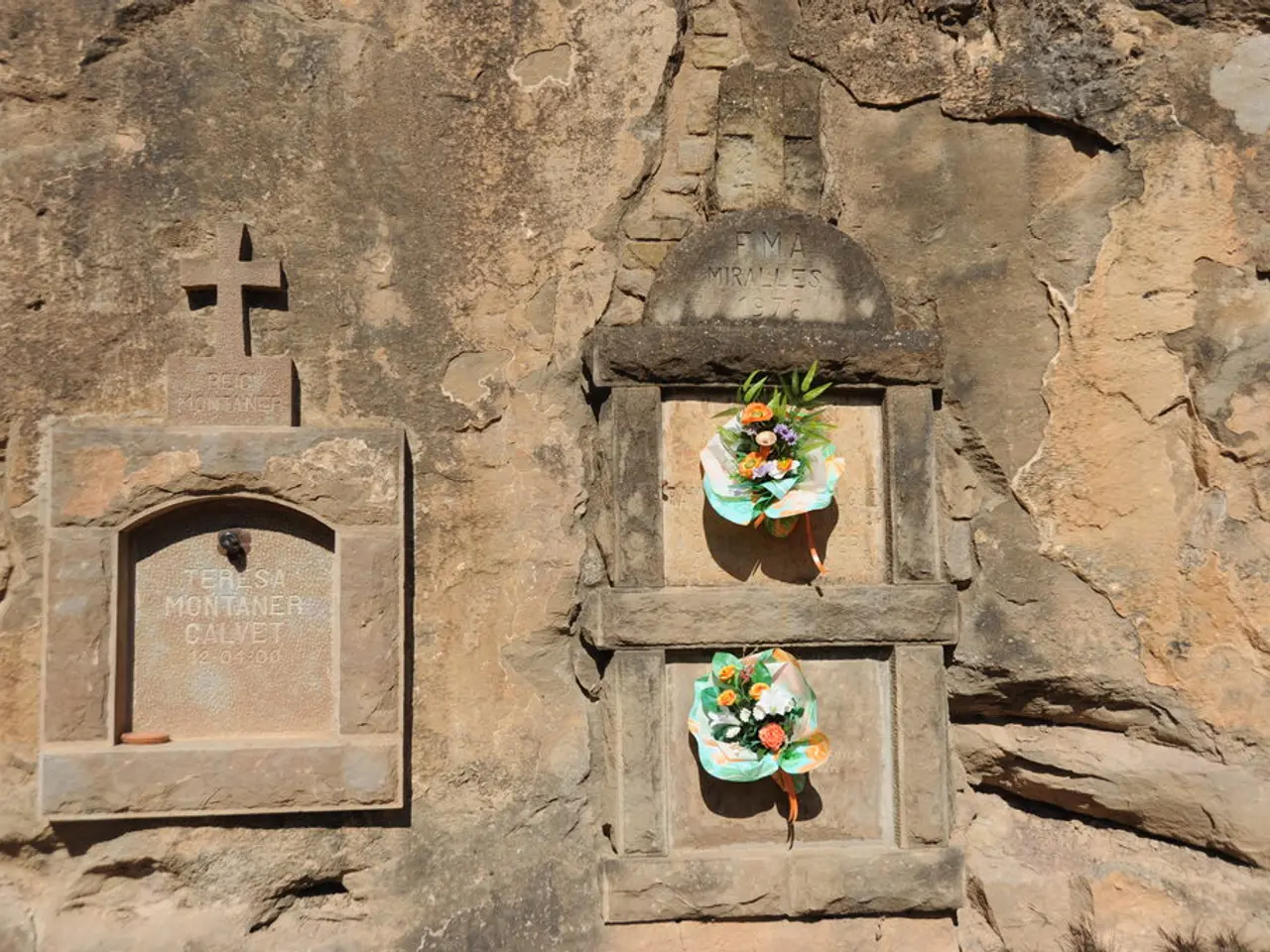Japan marked the 80th anniversary of the war's end, symbolizing profound regret, with the term "Tenno" representing penitence.
Article: Yasukuni Shrine and Japan's Complex Legacy of War Commemoration
The Yasukuni Shrine in Japan, a significant historical site dedicated to around 2.5 million Japanese war dead since the 19th century, has long been a source of controversy due to its inclusion of 14 wartime leaders convicted of serious war crimes.
Established in 1869 by Emperor Meiji, the shrine serves as a place of mourning and remembrance for those who served the nation and lost their lives in wars. However, its association with Japan's militaristic past, particularly its enshrinement of war criminals, has made it a focal point of diplomatic tension, especially with China and South Korea.
Visits by Japanese politicians to the Yasukuni Shrine have repeatedly triggered strong criticism and diplomatic protests from these countries. China's Foreign Ministry views the shrine as a "spiritual symbol of Japan’s militaristic wars of aggression," while South Korea expresses "deep disappointment and regret," seeing such visits as reminders of Japan’s imperialist and militarist past.
In the recent commemoration of the 80th anniversary of Japan's surrender in World War II, Prime Minister Shigeru Ishiba did not visit the shrine but sent an offering, stating that he would "maintain the painful memories of war." This was seen as a "break" from the speeches of his predecessors who belonged to the conservative Liberal Democratic Party (LDP).
Emperor Naruhito, in his address, expressed deep remorse for Japanese war atrocities, a sentiment that was absent in the speeches of his predecessors. This was the last time a prime minister, Yoshihiko Noda of the Democratic Party, spoke of "remorse" for Japanese war atrocities, which was in 2012.
The Pacific War, which had begun nearly four years earlier with Japan's surprise attack on the U.S. naval base at Pearl Harbor on December 7, 1941, claimed millions of lives, including around 1.2 million Japanese military casualties and approximately 500,000 civilian deaths from U.S. air raids. Japan occupied vast territories and islands in the Pacific, leading to millions of deaths under Japanese occupation.
On September 2, 1945, Japan's surrender was signed aboard the battleship USS Missouri in Tokyo Bay, witnessed by representatives of the Allies. This marked the end of World War II in Asia.
Tens of thousands of people visited the Yasukuni Shrine on the anniversary of Japan's surrender, reflecting the complex emotions surrounding the site. While many view the shrine as a place to honour fallen soldiers and remember the sacrifices of war, others see it as a symbol of Japan's militaristic past and a reminder of atrocities committed during its wartime expansions.
The Yasukuni Shrine symbolizes a complex legacy: - It is a memorial for fallen Japanese, including non-combatants and honoured ancestors. - It is a political symbol internationally, especially due to the inclusion of war criminals and militaristic implications. - It continues to be a source of diplomatic tension, notably with China and South Korea, who interpret visits by Japanese officials as lack of remorse for Japan's wartime actions and an obstacle to reconciliation.
These tensions complicate Japan’s diplomatic relations with its Asian neighbours and underline the challenges of dealing with historical memory in postwar East Asia.
[1] "Yasukuni Shrine," Britannica, accessed August 16, 2023, https://www.britannica.com/topic/Yasukuni-Shrine. [2] "Yasukuni Shrine," BBC News, accessed August 16, 2023, https://www.bbc.com/news/world-asia-18420961. [3] "Yasukuni Shrine," The Japan Times, accessed August 16, 2023, https://www.japantimes.co.jp/news/2013/08/15/national/yasukuni-shrine-visited-by-abes-ancestors-amid-controversy/. [4] "Yasukuni Shrine," The Diplomat, accessed August 16, 2023, https://thediplomat.com/2013/08/yasukuni-shrine-visited-by-abes-ancestors-amid-controversy/. [5] "Yasukuni Shrine," The Guardian, accessed August 16, 2023, https://www.theguardian.com/world/2013/aug/15/japan-yasukuni-shrine-shinzo-abe-visit-controversy.
- The Yasukuni Shrine in Japan is a significant site for the commemoration of war-and-conflicts, particularly the war dead since the 19th century, but its inclusion of war criminals has politicized it, attracting general-news attention and causing diplomatic tension, especially with China and South Korea.
- Japan's approach towards its military past, as symbolized by the Yasukuni Shrine, is often the subject of general-news coverage and international debate, with visits by Japanese politicians triggering controversy, and the politicization of the shrine creating tensions in the country's relations with its Asian neighbors.





